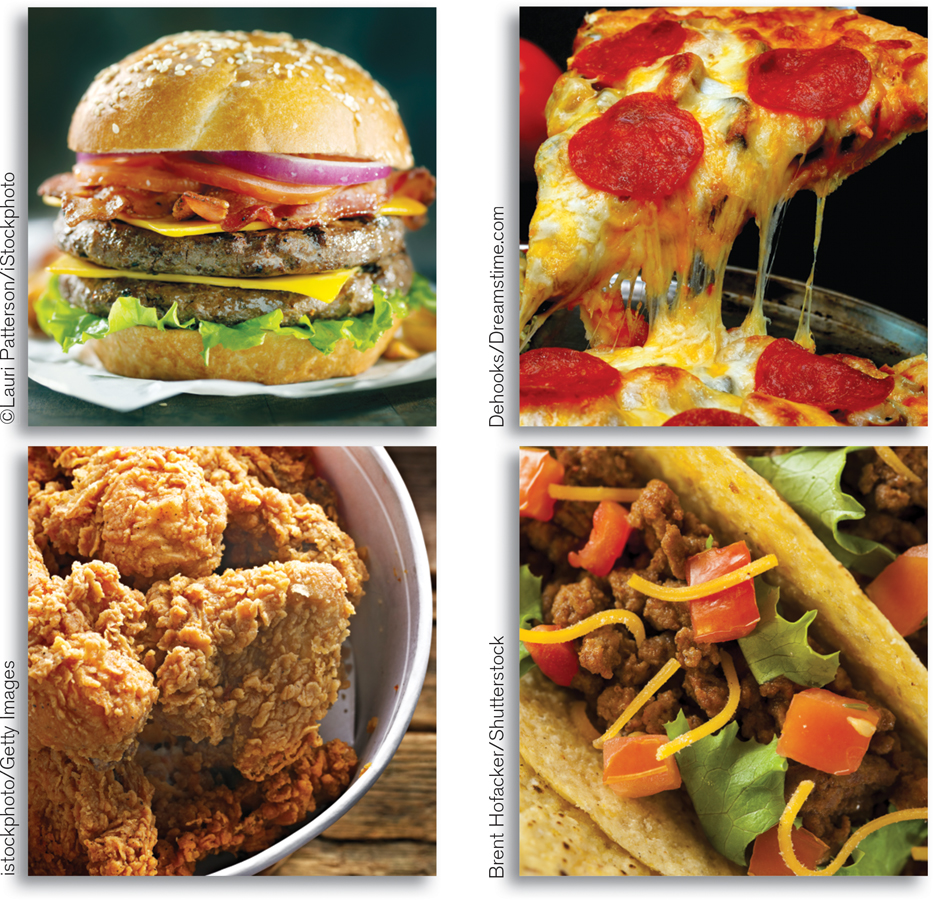ABEST-SELLING BOOK TITLED Fast Food Nation offered a fascinating if rather negative report on the burgers, pizza, tacos, and fried chicken that make up so much of the modern American diet. According to the book, all fast-food chains produce and deliver their food in pretty much the same way. In particular, a lot of the taste of fast food—whatever kind of fast food it is—comes from food additives manufactured in New Jersey.
But each fast-food provider goes to great lengths to convince you that it has something special to offer. As a sign of how well McDonald’s carefully cultivates its image, everyone recognizes the McDonald’s slogan—“I’m lovin’it!”—and knows what a Big Mac or a Quarter Pounder is. Its rivals Burger King and Wendy’s emphasize their cooking techniques—Burger King with its “flame-broiled patties” and Wendy’s with its “hot and juicy made-to-order old-fashioned hamburger”—to make consumers believe that their burgers are better tasting. A few years back Wendy’s went so far as to mount an advertising claim with a little old lady yelling “Where’s the beef?” to highlight its somewhat bigger burgers (compared to those at McDonald’s).
So how would you describe the fast-food industry? On the one side, it clearly isn’t a monopoly. When you go to a fast-food court, you have a choice among vendors, and there is real competition between the different burger outlets and between the burgers and the fried chicken. On the other side, in a way each vendor does possess some aspects of a monopoly: at one point McDonald’s had the slogan “Nobody does it like McDonald’s.” That was literally true—though McDonald’s competitors would claim that they did it better. In any case, the point is that each fast-food provider offers a product that is differentiated from its rivals’ products.
In the fast-food industry, many firms compete to satisfy more or less the same demand—the desire of consumers for something tasty but quick. But each firm offers to satisfy that demand with a distinctive, differentiated product—products that consumers typically view as close but not perfect substitutes.
When there are many firms offering competing, differentiated products, as there are in the fast-food industry, economists say that the industry is characterized by monopolistic competition. This is the fourth and final market structure that we will discuss, after perfect competition, monopoly, and oligopoly.
We’ll start by defining monopolistic competition more carefully and explaining its characteristic features. Then we’ll explore how firms differentiate their products; this will allow us to analyze how monopolistic competition works. The chapter concludes with a discussion of some ongoing controversies about product differentiation—in particular, the question of why advertising is effective.
